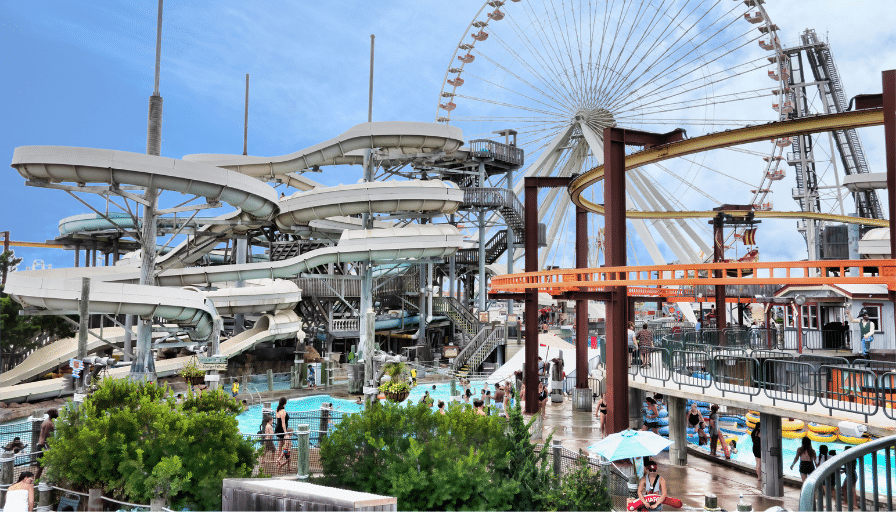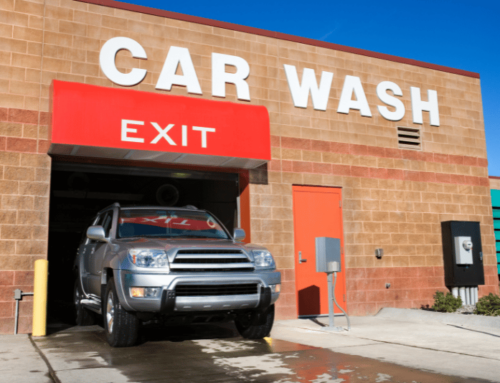How Much Does It Cost to Build a Water Park

As a ballpark figure, a small to medium-sized community water park might cost between $1 million to $15 million, while large commercial water parks can easily exceed $20 million to $100 million or more. A water park is an amusement park that allows visitors to go throughout the park’s many wet attractions, including the rides, slides, splashes pads, playgrounds, and lazy streams. In addition to natural waves, some contemporary water parks may have manufactured alternatives for surfers and bodyboarders in the form of a wave pool or a flow rider. These recreational areas could be located indoors, outdoors, or a hybrid of the two.
Cost Breakdown of Building a Water Park
Building a water park is a thrilling venture, but it’s crucial to understand the significant financial investment involved. Here’s a breakdown of the key cost categories:
Land Cost and Civil Construction (50% or more of total budget):
- Land Acquisition: The importance of finding the ideal location cannot be overstated. The cost associated with securing a site varies significantly based on size, proximity to urban centers, and the presence of infrastructure. A report by The Park Database suggests that smaller water parks, ranging between 2,000 to 9,000 square meters, have the potential to be situated in urban settings, which could mitigate the expenses related to land acquisition.
- Civil Construction: This phase covers all the essential groundwork required for the operational functionality of the park. It includes:
- Earthwork: Tasks such as excavation, grading, and landscaping.
- Utilities: The installation of water supply, drainage systems, and electrical lines.
- Foundations: Constructing robust foundations for the water slides, pools, and additional structures.
Water Park Equipment (Significant portion of budget)
This category represents the heart of the water park experience and includes:
- Water Slides: Prices for water slides can range significantly, starting from a few thousand dollars for standard models to skyrocketing into the hundreds of thousands for custom-designed, thrilling attractions.
- Wave Pool Technology: Creating the perfect wave involves advanced technology, with costs varying depending on the size of the pool and the complexity of the desired wave patterns.
- Water Purification Systems: Maintaining crystal-clear and safe water is crucial. High-quality filtration and sanitation systems are essential for ensuring guest safety.
- Theming and Decorations: Developing a unique and immersive environment can incur additional costs, including landscaping, artistic sculptures, and decorative elements to elevate the atmosphere.
Operating Costs (Ongoing expenses)
While not part of the initial construction budget, ongoing operational costs need careful consideration. These include:
- Labor: Staffing lifeguards, concession stand workers, maintenance personnel, and administrative staff.
- Utilities: Water treatment, electricity for pumps and filtration systems, and climate control for indoor parks.
- Marketing and Promotions: Attracting visitors requires ongoing marketing efforts.
- Supplies: Chemicals for water treatment, pool maintenance supplies, and other consumables.
- Administrative Costs: Insurance, property taxes, and general management expenses.
By carefully planning and budgeting for each of these cost categories, you can take a financial plunge into the exciting world of water park development.
How Are Water Parks Profitable?
Many American waterparks have a modest beginning, but enterprising businesspeople have recognized the massive growth potential of the industry. Visitors worldwide will flock to a water park that has something for them since they know they will have a good time there. A park’s development and prosperity prospects are bright as long as it is appropriately managed. What, therefore, are how water parks earn money? Not only do water parks profit from customers’ entrance fees, but also from their purchases of food, drinks, handicrafts, and other items. Access to certain features or attractions within a park may also incur an additional cost. Profits at a theme park, particularly during the summer months, might be boosted by adding a water park.
What Are The Costs Involved In Opening A Waterpark?
The park’s short- and long-term aims will significantly impact the costs connected with undertaking such an initiative. Buying land will be your first and most crucial financial move. Do your homework on the potential locations you’re considering before deciding. Depending on the style of waterpark you want to construct, experts advise obtaining between 8 and 15 acres of property.
- The typical indoor amusement park is between 8 and 10 acres in size, with a building size of over 25,000 square feet.
- The average size of a park in the great outdoors is 13-15 acres.
- A mixed indoor center would require 9-12 acres, with an average construction size of 23,000 square feet.
After purchasing the land, the next step is to schedule meetings with a professional consultant and contractor. Depending on the size of the structure and its location in the country, construction expenses can range from $250 to $600 per square foot. Based on published estimates, the cost of building a 2720-square-foot indoor park is close to $690.000. Building, heating, ventilation, air conditioning, pools, technical, snack bar, surrounding spaces, theming, waterslides, and recreational items are all factored into these estimates. To build an indoor park of 9450 square feet would cost close to $2.5 million, or an average of $273 per square foot. The park’s owners estimate they spent around $1.5 million to get things going with its outdoor attraction.
What Are The Costs For The Long-Term For The Waterpark?
Estimating the annual operating expenses of a park is difficult due to the numerous factors that affect the bottom line. You must have room in your monthly budget for the following: Repairs to infrastructure, attractions, and equipment A cost savings in the tens of thousands of dollars is possible with a proactive and predictive maintenance schedule. Furthermore, there are the following additional expenses:
- Chemicals, fuels, and services account for between 8 and 12% of total operational costs.
- All the new attractions being built.
- The first three percent of your funds should go for operating materials.
- Cleaning.
- Routine training for employees.
- Insurance.
Based on your business’s size, hours of operation, and the number of employees you’ll need to provide a safe environment for your customers, payroll expenditures might easily eat up half or more of your annual budget.
Get the Money You Need to Open a Water Park
Several routes you may take to secure finance for your water park business, and you should carefully consider each before moving further. Some new startups may find themselves in a circumstance where your water park startup expenses are probably only a couple hundred dollars to get established. Still, we thought it was vital to provide the below ways in case you’re considering ideas down the line. Here are five ways to get the money you need to open a water park:
- Friends and family fundraising.
- Self-financing (i.e., using one’s own money).
- Acquiring Funding from Private Investors.
- Obtaining a bank loan.
- To get funding from a hard money lender.
Of course, these five possibilities are simply the tip of the iceberg when it comes to finding ways to fund your business.
Is The Waterpark Business Profitable?
Increases in market share and revenue have contributed to a CAGR for the industry of 17.7% since the mid-1990s. As the unemployment rate has dropped, discretionary income has risen, and the economy has improved, water parks have seen a rise in their profitability. With more money in consumers’ pockets, waterparks have expanded. There is a correlation between the rising number of tourists and the success of water parks. A multitude of factors, including fuel prices, geopolitical risks, and worries of sickness or terrorism, affect the distance that consumers are prepared to travel and thus the sustainability of these parks. However, domestic tourism is expected to increase, which is good news for U.S. water parks if international tourism drops as a result of geopolitical unrest.
Conclusion
Even as our culture becomes increasingly virtual and computerized, playing in the water as a family is a timeless tradition. It, together with the thrilling new rides and attractions produced each year, bodes well for the industry’s continued success and will motivate further growth in the future. The water park industry is fascinating, but high-stakes investments carry risk. But before you jump into making hasty judgments on how to launch your water park, make sure you are ready to take on this big project both financially and mentally. It can be a huge investment and earn you great profits. You only need to research, plan, and then execute.


